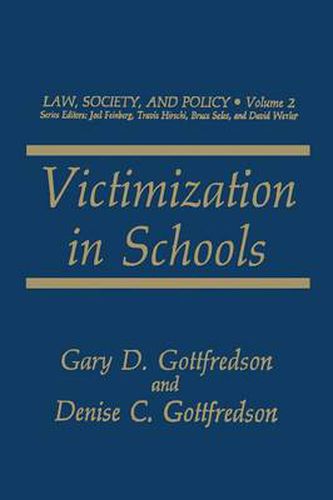Readings Newsletter
Become a Readings Member to make your shopping experience even easier.
Sign in or sign up for free!
You’re not far away from qualifying for FREE standard shipping within Australia
You’ve qualified for FREE standard shipping within Australia
The cart is loading…






This title is printed to order. This book may have been self-published. If so, we cannot guarantee the quality of the content. In the main most books will have gone through the editing process however some may not. We therefore suggest that you be aware of this before ordering this book. If in doubt check either the author or publisher’s details as we are unable to accept any returns unless they are faulty. Please contact us if you have any questions.
The perception that our nation’s public schools are disorderly and unsafe is widespread, and the image of the public school is deteriorating. Since 1974, the Gallup organization has gathered opinions about the public schools. The percentage giving the schools an A rating declined from 18% to 6% between 1974 and 1983 (Gallup, 1974, 1984). In a recent survey of America’s teenagers, only 9% gave the schools an A rating (Bahner, 1980, p. 106). Lack of discipline tops the list of the problems adults see facing schools, and class disturbances and theft are reported by teenagers to be very big or fairly big problems in their schools (Bahner, 1980, p. 107). These public perceptions are fostered by and reflected in national media attention ( City Schools in Crisis, 1977; Help! Teacher Can’t Teach! 1980; High Schools under Fire, 1977). Public concern is also reflected in Congressional hearings where testimony creates the image of grave disorder within our schools (U.s. Senate, Committee on the Judiciary, 1975, 1976b; U.s. House of Representatives, Subcommittee on Elementary, Secondary, and Vocational Education, 1980). The public has given the schools low marks, and the Senate Judiciary Committee (1975) gave the schools an A in violence and vandalism. In short, parents, students, and public officials are alarmed at what they see as a rising tide of violence and disorder in the schools and are concerned about how much learning can occur in a disruptive environ ment, and about the safety of teachers and students.
$9.00 standard shipping within Australia
FREE standard shipping within Australia for orders over $100.00
Express & International shipping calculated at checkout
This title is printed to order. This book may have been self-published. If so, we cannot guarantee the quality of the content. In the main most books will have gone through the editing process however some may not. We therefore suggest that you be aware of this before ordering this book. If in doubt check either the author or publisher’s details as we are unable to accept any returns unless they are faulty. Please contact us if you have any questions.
The perception that our nation’s public schools are disorderly and unsafe is widespread, and the image of the public school is deteriorating. Since 1974, the Gallup organization has gathered opinions about the public schools. The percentage giving the schools an A rating declined from 18% to 6% between 1974 and 1983 (Gallup, 1974, 1984). In a recent survey of America’s teenagers, only 9% gave the schools an A rating (Bahner, 1980, p. 106). Lack of discipline tops the list of the problems adults see facing schools, and class disturbances and theft are reported by teenagers to be very big or fairly big problems in their schools (Bahner, 1980, p. 107). These public perceptions are fostered by and reflected in national media attention ( City Schools in Crisis, 1977; Help! Teacher Can’t Teach! 1980; High Schools under Fire, 1977). Public concern is also reflected in Congressional hearings where testimony creates the image of grave disorder within our schools (U.s. Senate, Committee on the Judiciary, 1975, 1976b; U.s. House of Representatives, Subcommittee on Elementary, Secondary, and Vocational Education, 1980). The public has given the schools low marks, and the Senate Judiciary Committee (1975) gave the schools an A in violence and vandalism. In short, parents, students, and public officials are alarmed at what they see as a rising tide of violence and disorder in the schools and are concerned about how much learning can occur in a disruptive environ ment, and about the safety of teachers and students.